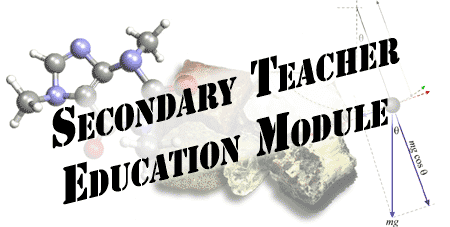|

Many student-teachers think that a teacher's job is to cover
the material presented in a textbook. Hopefully, after this module
is enacted, they will have realized that teachers should not "teach"
a textbook; they should adapt and modify existing material from
numerous sources so that the materials they use provides their
students with the best support pupils in achieving pre-specified
learning goals.
This module is intended to assist instructors of secondary science
methods courses in introducing student-teachers to:
A. The importance of curriculum materials in shaping classroom
activities and supporting student learning.
B. The Project 2061 criteria as measures of curriculum quality.
C. Considerations in selecting, adapting, and enacting curriculum
materials.
The module provides student-teachers opportunities to use the
criteria in evaluating and modifying existing materials.
The module addresses 6 of the 22 criteria developed by Project
2061. The 6 criteria addressed in this unit are:
Category I, Criterion B - Conveying Lesson/Activity Purpose
Category II, Criterion D - Addressing Students' Ideas
Category III, Criteria A - Providing a Variety of Relevant Phenomena
Category IV, Criterion C - Representing Ideas Effectively
Category V, Criterion A - Encouraging Students to Explain their
Ideas
Category VI, Criterion B - Probing Student Understanding
The module is intended to be used by the course instructor as
a supplement to existing course material.
The design of the module assumes that the student-teachers are
in field placements and have access to:
A. Chemistry That Applies by Michigan Science Education Resources
Project. A PDF
of Cluster 3 from the unit can be downloaded if the full unit
is not available.
B. Teacher journals such as The Science Teacher, Science Scope,
and The Physics Teacher.
C. Science units taught in the field placement classrooms.
It also assumes that the student-teachers have already learned
about the importance of naive conceptions, formative assessment,
representations, contextualization, and cooperative group work
in learning.
The module includes approximately 4 hours of instruction and
15 hours of homework.
The Instructor’s
Guide contains all the information needed to use the module.
|

